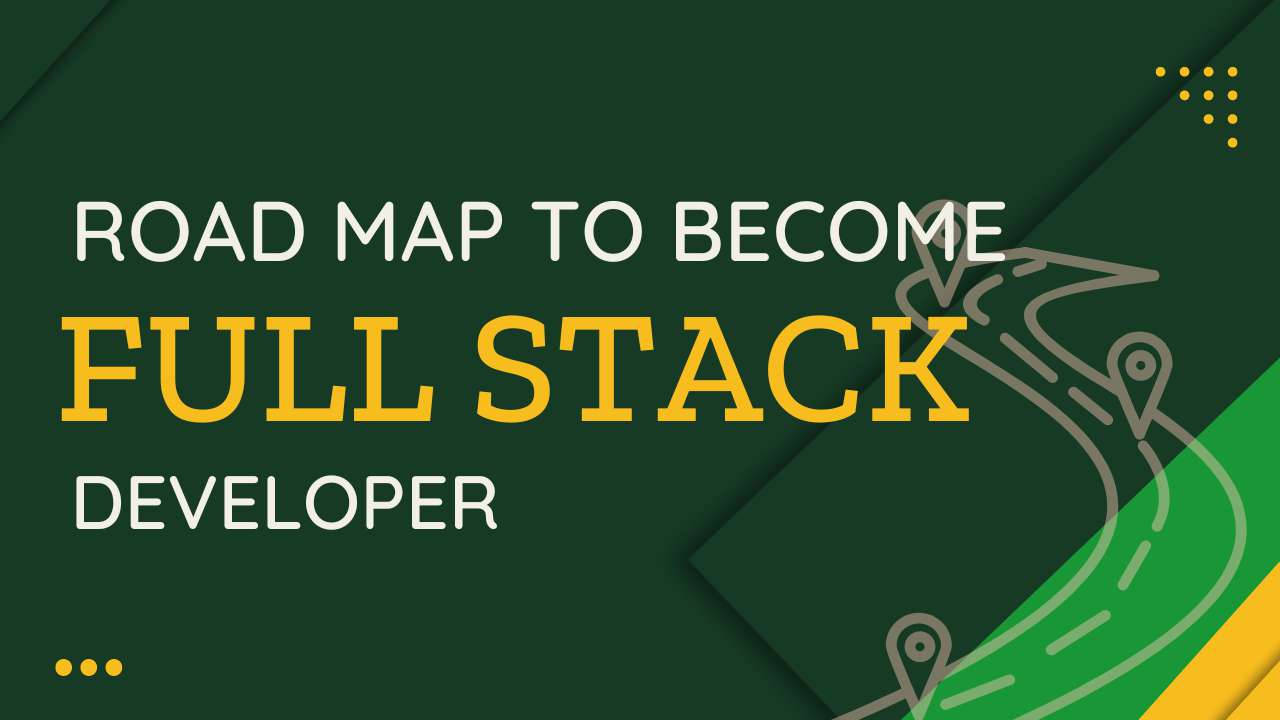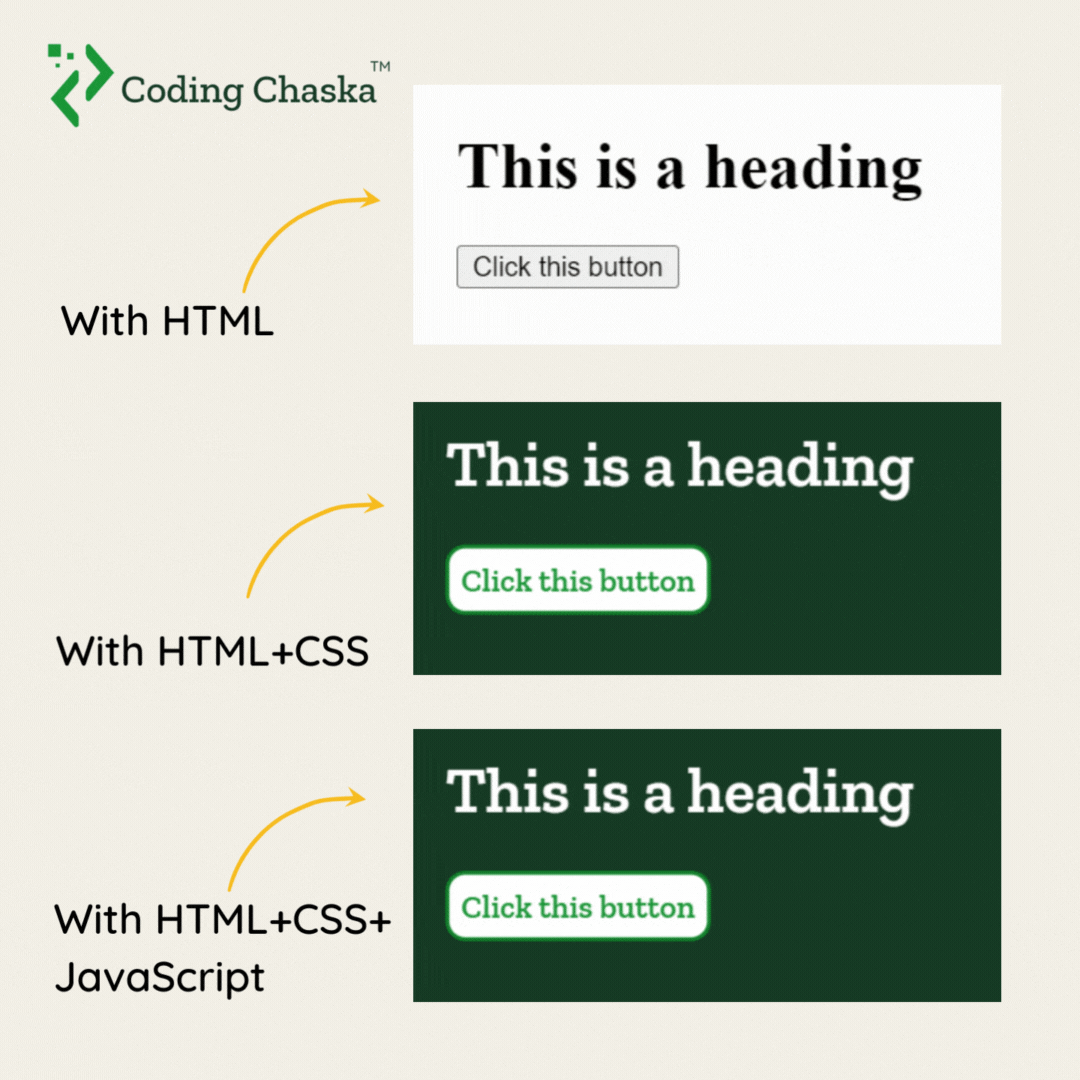Website development has been evolving with time. It is very important to learn the tools that are modern, popular, and somewhat future-proof (at least for a few years). The tools that were used 10 years back are now outdated. I will discuss the road map to become a full-stack web developer in 2022.
A Full Stack Developer can build a website's front-end and back-end. Now, what are front-end and back-end?
Front-End Developer: They create everything that you see on a website.
Back-End Developer: They build that the user can not see. They create pathways to deliver information to users.
Let’s discuss how can you create a website’s frontend and backend.
Required tools/skills for the frontend development
1) Learn the Basics (compulsory)
HTML, CSS, and JavaScript are the main languages of the Web. If you want to learn frontend development you must start with HTML, CSS, and JavaScript.
HTML describes and defines the content and basic structure of the website.
CSS makes your website beautiful by adding colors, custom fonts, and creating layouts on a website. You can implement animations and smooth transitions with just CSS too.
JavaScript is a programming language. It makes your website more interactive. You can add logic to your website using JavaScript.
Here is a simple animation that explains the difference between HTML, CSS, and JavaScipt.
2) CSS Framework
There are many libraries where you can find pre-written CSS and JavaScript. It helps you write code for website development. It is not compulsory, but learning one of these frameworks will be helpful.
- Tailwind (*recommended)
- Bootstrap
- Bulma
3) JavaScript Framework (Important)
JavaScript programming language has been evolving rapidly. Many developers and companies have created many frameworks using it. These frameworks are very helpful to develop single-page and fast applications. It is very important to learn one JavaScript Framework.
a) React + NextJS (*recommended)
React is a free and open-source front-end JavaScript library for building user interfaces based on UI components. It is maintained by Meta (Facebook) and a community of individual developers and companies. Although React is a good framework, it is not good with SEO (search engine optimization). So Nextjs was created to solve this issue. It is recommended to learn Nextjs along with React.
b) Angular
Angular is a TypeScript-based free and open-source web application framework led by the Angular Team at Google and by a community of individuals and corporations. It is also a very popular and powerful framework.
c) Vue.js
Vue.js is an open-source Model–View–ViewModel front-end JavaScript framework for building user interfaces and single-page applications.
There are many other good frameworks e.g. Svelte, Ember, Backbone.js, etc. You can have a look at these frameworks too.
4) Git + Github (Important)
Git is a version control. It helps you to keep the track of your project. It also helps in a team project in collaboration. Learning Git and Github is important to learn if you want to work in the IT field. I will write a complete article on GIT and GitHub soon.
5) Deployment
Vercel and Netlify are popular platforms to deploy your frontend application. You can follow the documentation to deploy your application
Required tools/skills for the backend development
1) Server Programming Language
If you want to develop your backend you have to learn at least one server-side programming. Python and Nodejs are very popular choices in recent times. However, there are many other good choices. You can choose any of the following languages.
a) Python (*recommended)
b) JavaScript + Nodejs (*recommended)
c) Ruby
d) PHP
e) Java
2) Database
You need to know about databases as well, some of the most popular include MySQL, MongoDB, PostgreSQL, Oracle, etc
3) Backend framework
Learning a backend framework makes your backend development easier. You can choose a backend framework based on your programming language.
a) Python - Django / Flask
b) NodeJs - Express / Fastify
c) Ruby - Ruby on Rails
d) Php - Laravel
e) Java - Spring
4) Restful APIs
You should also learn how to make Restful APIs. It is essential nowadays. You can learn to make Rest APIs in your chosen backend framework.
5) Git + Github
As mentioned in the front end, it is a very important skill to learn.
6) Deployment
Azure, Digital Ocean, Linode, and Heroku are popular platforms where you can deploy your backend on any of the following options.
If you are interested in DevOps you may also want to have a look at Docker, Kubernetes, etc
You can learn all these tools to become a full-stack developer. Don’t rush. Learn these tools slowly and create projects while learning them.
Recap of the tutorial
Required tools/skills for the frontend development
1) Learn the Basics (compulsory) - HTML, CSS, JavaScript
2) JavaScript Framework - React + Nextjs / Angular
3) Git + Github
4) Deployment - Netlify / vercel
Required tools/skills for the Backend development
1) Server-side programming language - Python / Nodejs / Ruby etc
2) Backend Framework - Django (Python) / Express (Nodejs) etc
3) Database - MySQL / PostgreSQL / MongoDB
4) RestAPIs
5) Git+Github
6) Deployment - AWS / Heroku
That’s all for this quick tutorial. I hope you enjoyed reading it.


